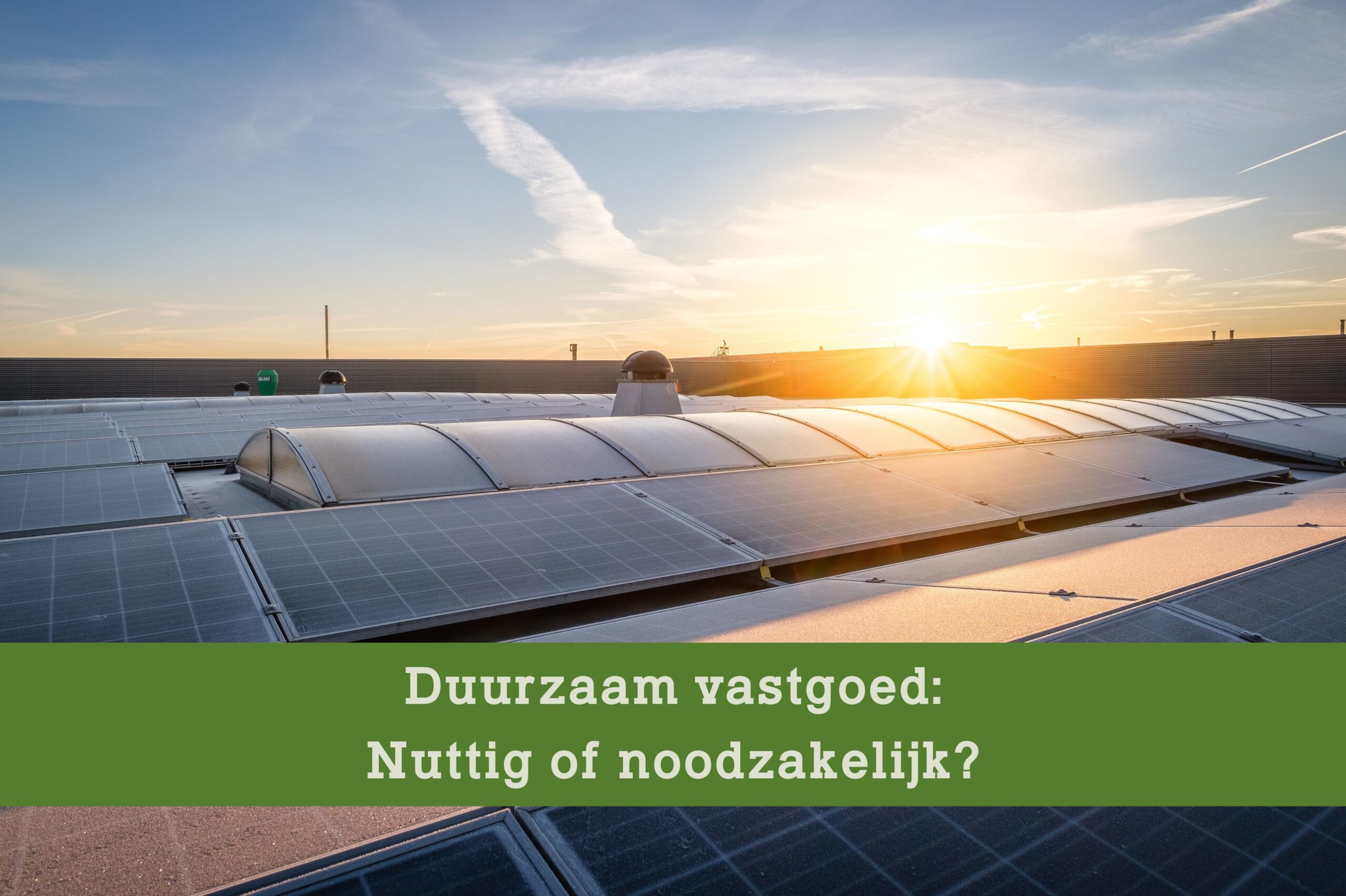Sustainable or responsible business is the norm for a growing number of companies, and this now goes beyond just LED lighting and waste separation. Real estate is also taking on an increasingly important role, as it can greatly contribute to both reduced environmental impact and increased business success.
In this article, we explain why sustainable real estate is not only useful for your business, but also necessary.
The need for sustainability
Buildings have a significant impact on the environment. For example, the construction and real estate sector accounts for 40 percent of global CO2 emissions. But the use of buildings affects the environment as well. For instance, households and the service sector together account for 27% of national energy consumption. Heating buildings consumes significant energy. Energy consumption in the built environment has been falling since 2010, mainly due to better insulation and more efficient heating systems, but it remains high.
The benefits of sustainable real estate
There are a lot of environmental gains to be achieved by making our real estate more sustainable. The reasons for companies to actually get started with this differ. Arguments we have heard from our customers are varying from ‘a positive image’ to ‘wanting to be of significance’ and ‘a good profit’. In the end there are roughly three reasons to think of why one would want to make their real estate more sustainable: it is socially desirable, financially interesting and legally required.

The benefits of sustainable real estate
Second, there are substantial financial benefits to be gained. Reducing energy consumption is a smart strategy to reduce costs and improve business results. For instance, energy costs generally make up a significant part of a company’s operational costs. In fact, according to Eurostat, energy costs are the most important cost item for businesses, and heating buildings in turn accounts for most of the energy bill. Moreover, sustainable real estate has a higher market value and sustainable projects are subject to more favourable financing conditions.
So by investing in energy-efficient technologies and sustainable materials, organisations can reduce their bills in the short term and save on maintenance costs in the longer term. But checking the existing technical installations and having them properly adjusted is also a simple intervention that immediately ensures lower energy bills. And let’s face it, who doesn’t want to cut costs?
Legal obligation
A third, not to be underestimated, argument for making real estate more sustainable is laws and regulations. These include the Climate Agreement, the European Green Deal and the Corporate Sustainability Reporting Disclosure (CSRD), which requires many companies to report on sustainability policies and performance.
To meet climate targets, there are also increasingly specific requirements for the sustainability of buildings. Think of the BENG requirements for new buildings, but also the energy label C required for existing offices since 2023. Moreover, by 2030, energy label A will become the standard, and by 2050, the goal is energy neutrality. This means that all social real estate will emit 55% and 95% less CO2 by 2030 and 2050, respectively. Complying with that legislation on time is a major challenge, especially given the high costs and sometimes long lead times. So getting started early is definitely not an unnecessary luxury.

More the rule than the exception
Demand for sustainable real estate is thus increasing for several reasons: growing environmental awareness, stricter regulations and organisations’ desire to cut costs. For instance, according to the PBL, almost 40% of real estate investors are willing to invest in sustainability. Moreover, more than half of offices now have an energy label C or better. Real estate sustainability is thus becoming more and more the rule than the exception, even though a substantial proportion of buildings do not currently comply with the required label.
Real estate sustainability: utility and necessity
It was long thought that making real estate more sustainable costs more (money) than it yields. However, that idea has long since ceased to be true. Sustainable buildings not only have a positive impact on the environment and climate, but also on the real estate sector itself. As an organisation, you not only benefit from cost savings and a better image, but also have a positive impact on the world around you. Moreover, national and international sustainability goals and regulations force organisations to take sustainability seriously and actively pursue change.
Real estate sustainability is thus no longer a question of either utility or necessity, but of both utility and necessity.


